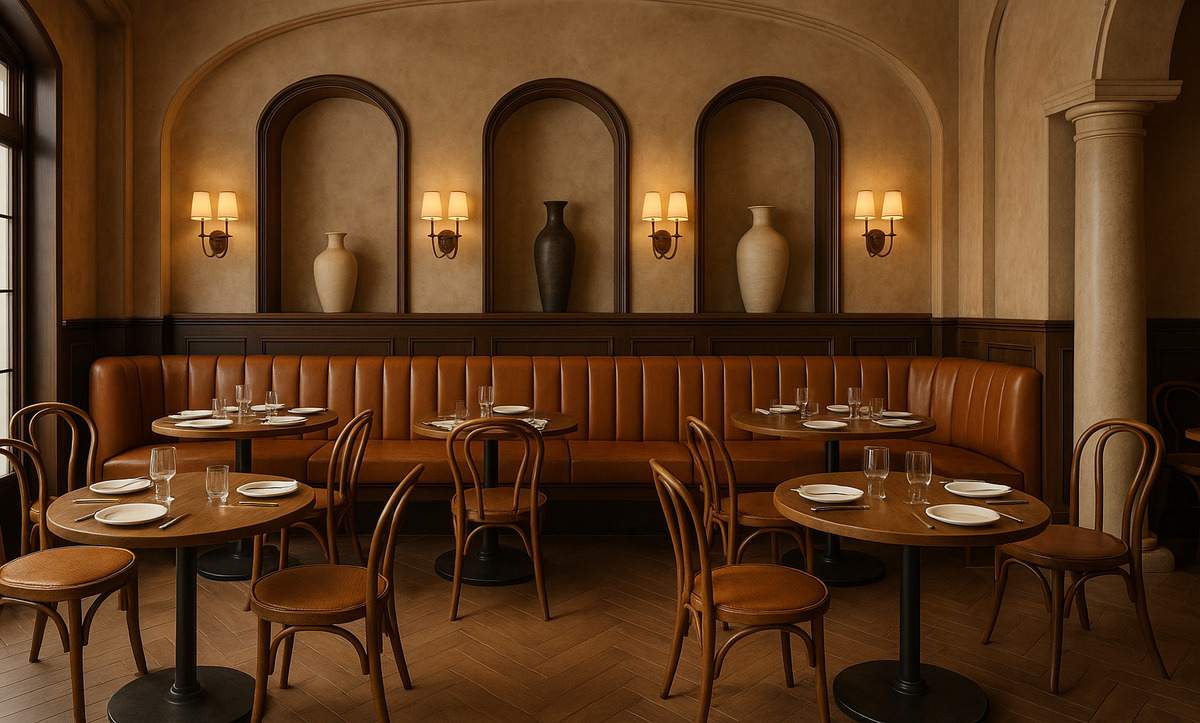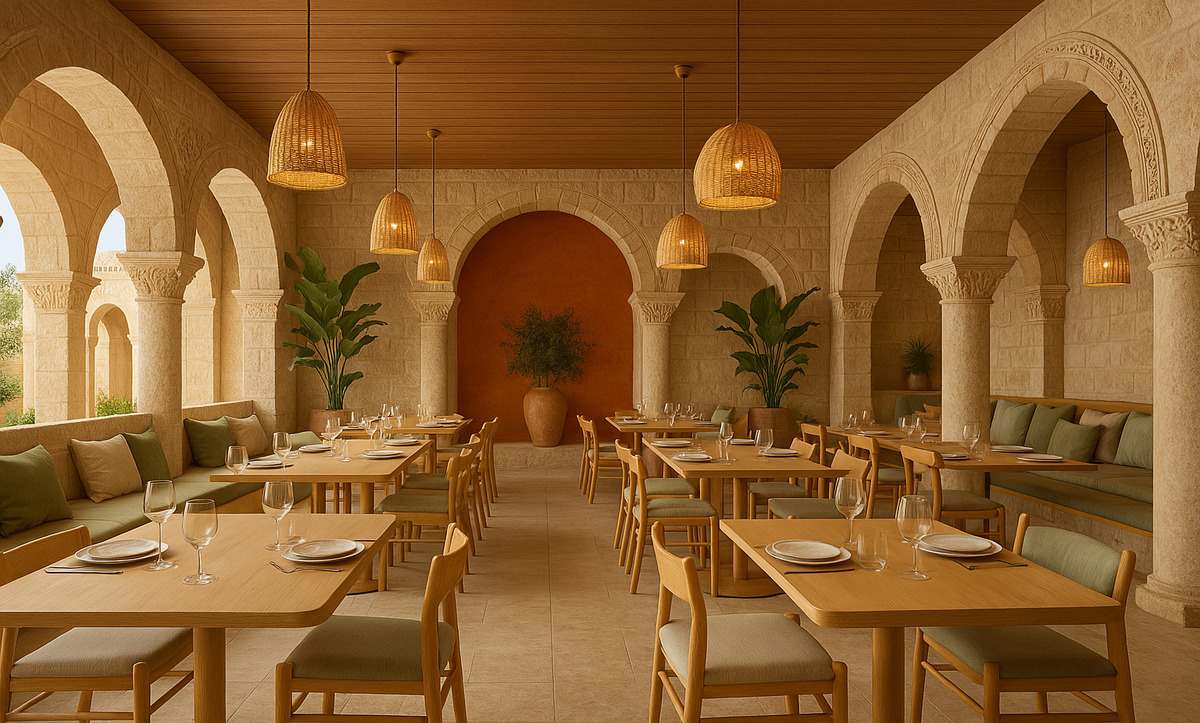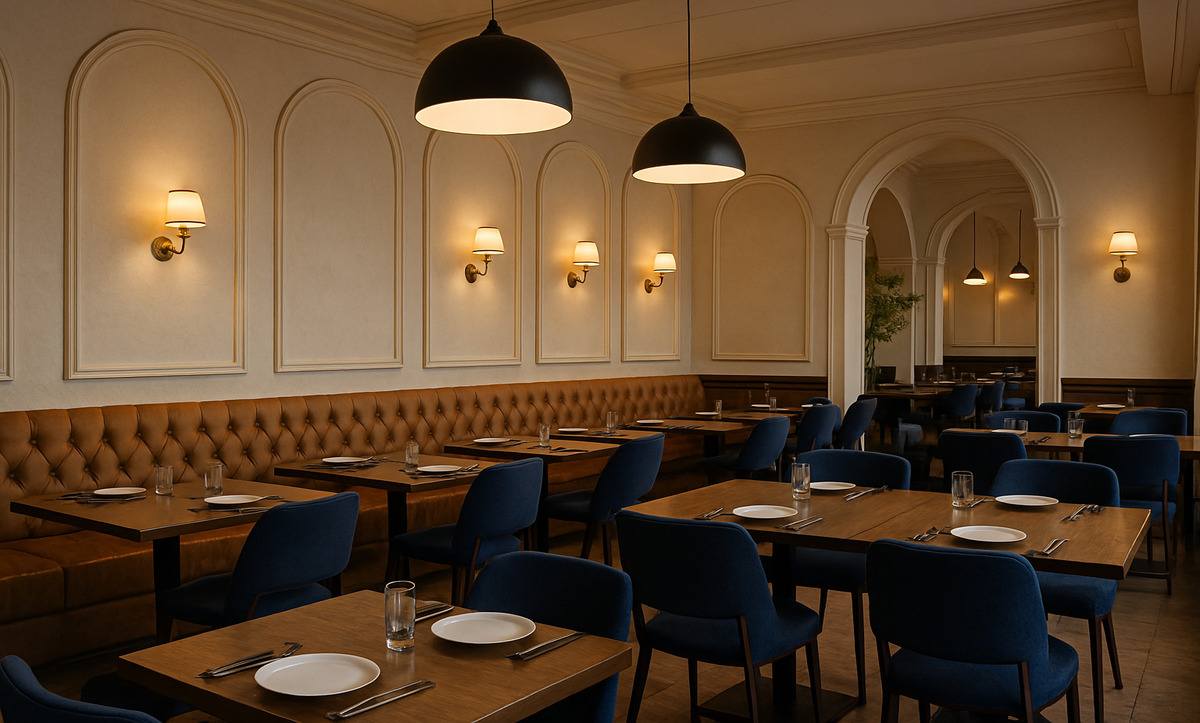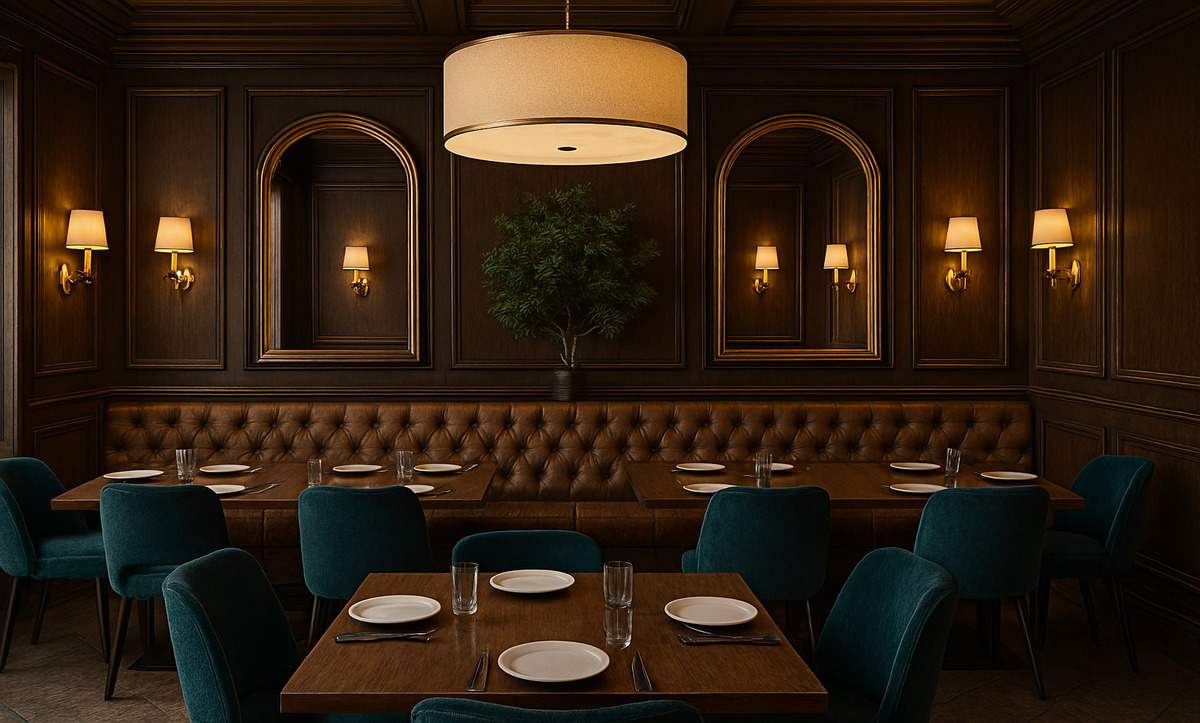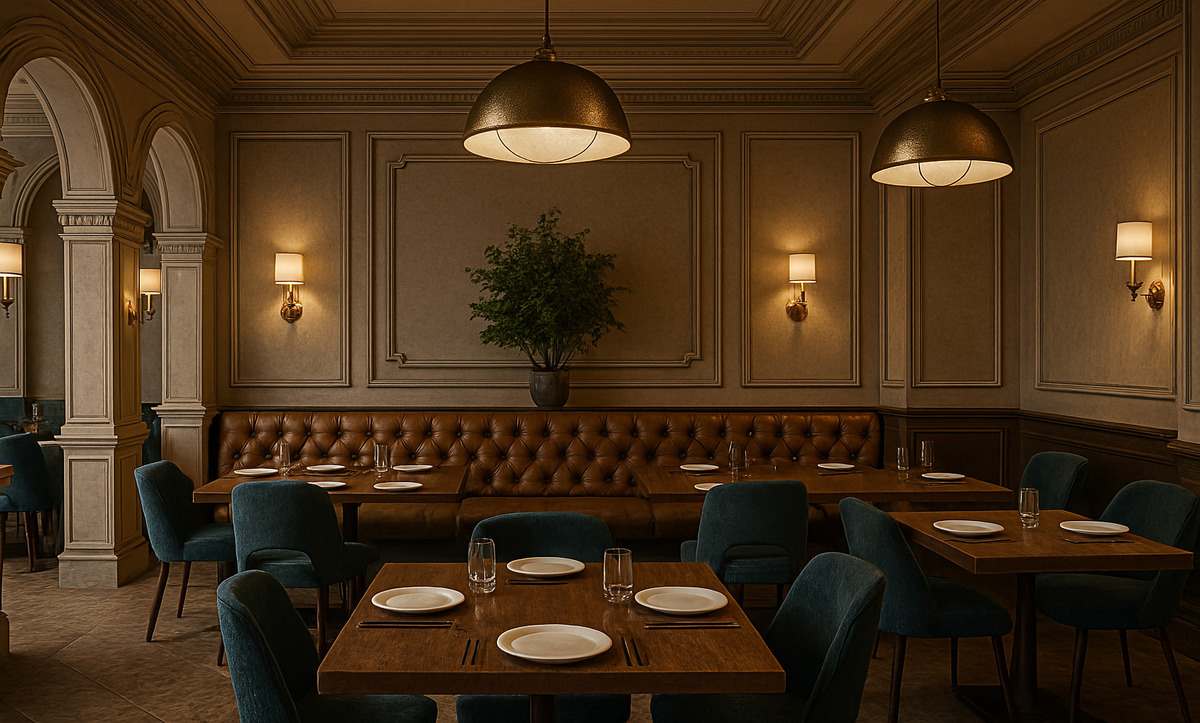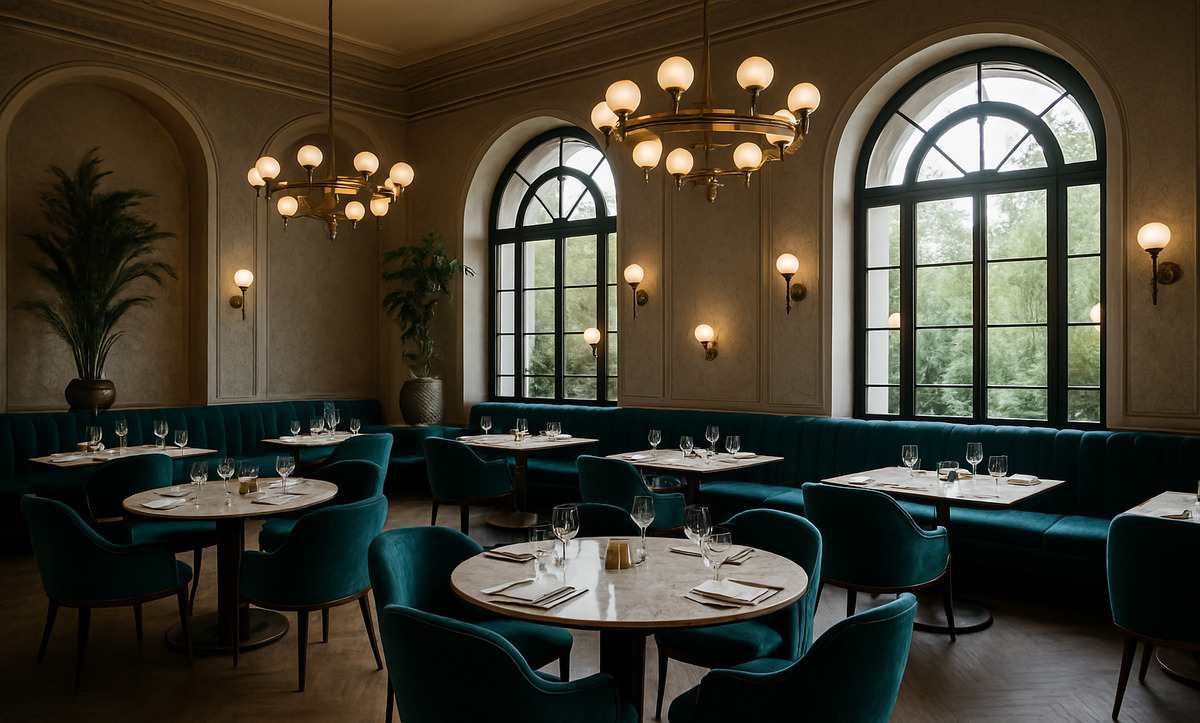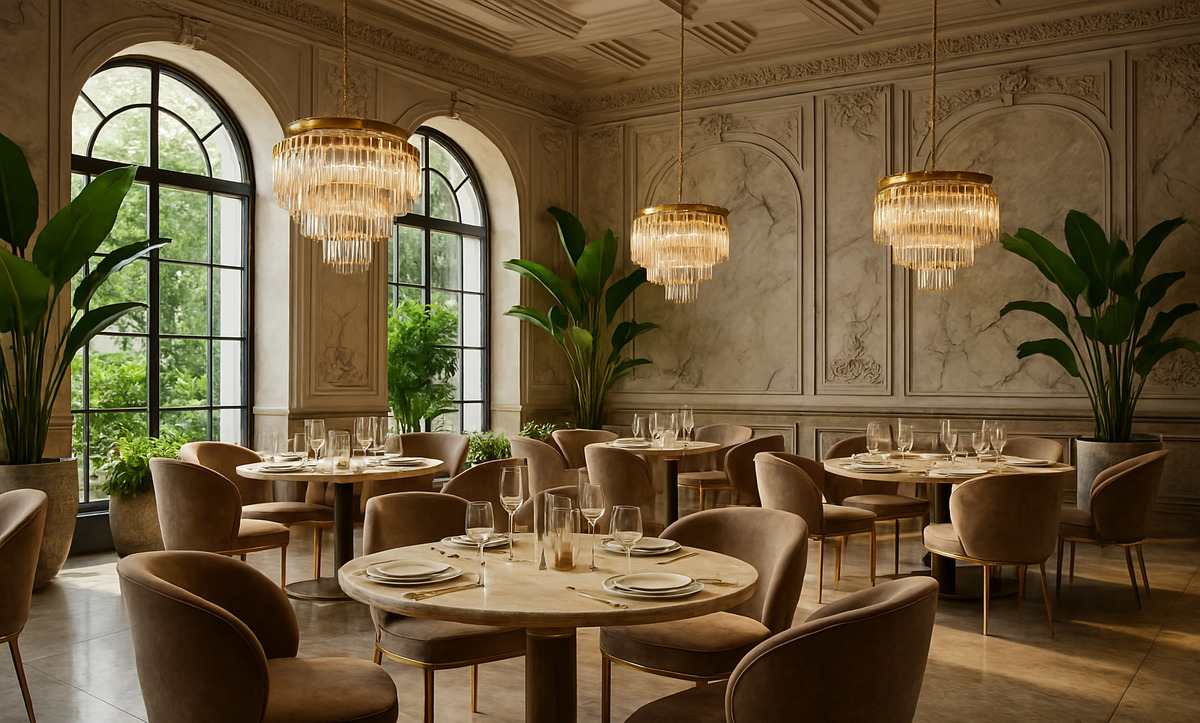Home Page | Blog | Restaurant Interior Design Guide: Styles, Materials, and Spatial Concepts
Restaurant Interior Design Guide: Styles, Materials, and Spatial Concepts
4/15/2025
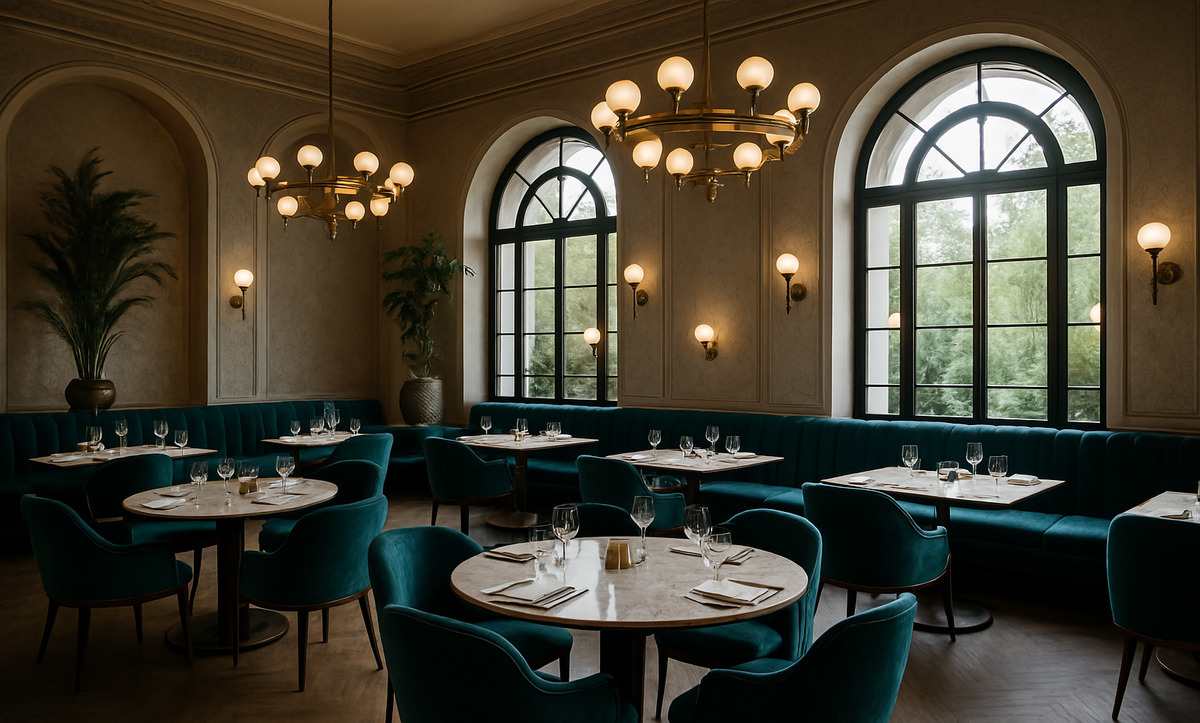
Restaurant interiors play a decisive role in shaping customer experience. Beyond the menu, guests respond to color, lighting, texture, and spatial flow. A thoughtfully designed interior can elevate a dining concept and reflect the brand’s identity in subtle yet effective ways.
This article explores key interior design styles, material selections, layout strategies, and decorative elements specific to restaurants. Each section includes practical guidance and detailed information to support decision-making for designers and business owners.
1- Design Styles in Hospitality Environments
Different restaurant models benefit from different stylistic approaches. A design that suits a fine-dining setting may not work in a fast-casual context. Below are some categories of interior concepts that consistently perform well in dining environments.
Modern Minimalism
This approach centers on clarity and spatial openness. Furniture pieces are typically sleek, with clean edges and neutral palettes. Materials like polished concrete, matte steel, and glass dominate. Decorative elements are kept to a minimum, allowing form to take precedence.
Lighting in minimalist spaces tends to be recessed or indirect. The overall mood remains calm, structured, and free from clutter.
Rustic Industrial
Often preferred for casual dining spots and breweries, this style emphasizes raw finishes. Brick walls, reclaimed wood tables, iron pipe fittings, and exposed ductwork create a bold visual narrative. Color schemes rely on earthy tones and vintage hues.
Lighting fixtures often include Edison bulbs, wall sconces, or factory-style pendants. Texture is essential here, and wear is part of the appeal.
Urban Bohemian
A more eclectic approach that supports layered aesthetics. Vintage furniture, patterned fabrics, and mix-and-match décor define this look. Seating may include a mix of benches, armchairs, and woven stools. Color choices lean toward saturated jewel tones or faded pastels.
Lighting combines natural materials such as rattan or brass with sculptural forms. It offers an inviting, informal tone, ideal for small, independent venues.
Art Deco Revival
Elegant lines, symmetrical compositions, and metallic accents define this direction. Restaurants leaning on classic luxury often draw from this style. Deep blues, greens, and blacks dominate color selections. Marble, lacquer, and velvet are frequently used for both surfaces and seating.
Chandeliers, mirrored walls, and geometric patterns complete the design vocabulary. It suits upscale bistros or high-end lounges.
2- Material Selection and Surface Planning
Material choices influence not only aesthetics but also functionality, acoustics, and durability. Each surface must support the operation of a high-traffic space without compromising its visual identity.
Flooring Options
The base of a restaurant should balance resistance and visual warmth. Engineered hardwood delivers a natural appearance with added longevity. Polished concrete offers a modern edge and easy maintenance. Terrazzo adds pattern and is highly durable.
Avoid overly slippery finishes or highly porous stones. Sound-absorbent underlayers may be required in spaces prone to echo.
Wall Treatments
Walls provide a canvas for character. Plaster finishes work well in contemporary or Mediterranean spaces. Decorative tiles suit open kitchens and restrooms. Wood paneling brings warmth, while stone cladding adds weight and texture.
Paints should be washable and matte or eggshell for a refined finish. Wall art, mirrors, and integrated shelving systems support both function and style.
Seating Materials
Durability remains critical for seating surfaces. Leather, faux leather, high-density fabric, and powder-coated metals hold up well under frequent use. Cushioning should maintain shape and comfort without sagging.
Where possible, include variation in seating options — combining booth seating, bar stools, and freestanding tables to encourage different social dynamics.
Tabletop Finishes
Tablet surfaces see high impact and must be both easy to clean and visually fitting. Marble and granite offer timeless elegance but require sealing. Laminate and compact laminate provide affordability without sacrificing appearance. Wood, if used, must be sealed thoroughly.
Color and material should harmonize with the flooring and seating selections without duplicating them.
3- Spatial Configuration and Circulation
The layout of a restaurant impacts operational efficiency and guest satisfaction. The right spatial planning prevents overcrowding and supports seamless service.
Zoning and Flow
Dining areas should include clear divisions between public and semi-private spaces. Elevated platforms, partial partitions, and flexible furniture arrangements help define zones without isolation. A clear sightline from the entrance to focal points such as the bar or open kitchen is ideal.
Service paths must allow for uninterrupted circulation between kitchen, floor staff, and guests. Avoid narrow passages and blind corners.
Seating Density
Optimal density depends on the concept. Fine dining typically allows more generous spacing, averaging 1.5 to 1.8 square meters per guest. Casual dining compresses this to around 1 to 1.2 square meters.
Balance seating quantity with guest comfort. Corner areas may be used for banquette-style seating to increase flexibility.
Entry and Waiting Areas
First impressions begin at the threshold. Even in small venues, the entrance must signal brand intent and allow room for waiting guests. Incorporate soft seating, a coat stand, or display shelving near the door. Avoid placing tables immediately next to the entrance to reduce noise and temperature discomfort.
4- Lighting and Acoustic Management
Lighting and sound significantly influence the dining atmosphere. Guests remain longer and spend more when the environment feels controlled yet inviting.
Ambient Lighting
General illumination sets the mood. Diffused sources create calm, while directional lighting adds drama. Ceiling-mounted lights, hidden LEDs, or backlit surfaces support a cohesive feel.
Light temperature must suit the tone of the space — warmer tones for cozy environments, cooler ones for energetic settings.
Task Lighting
Focused lighting is essential for menus, tables, and bar counters. Adjustable pendant lamps or wall-mounted arms provide this function. Avoid glare by using diffusers or frosted glass finishes.
The brightness level should support visibility without overexposure.
Decorative Lighting
Accent lighting adds identity. Feature pendants, chandeliers, and integrated shelving lights introduce character. These elements also highlight architectural features or branded décor.
Dimmer switches provide flexibility across dayparts.
Acoustic Solutions
Restaurants often suffer from high noise levels. Incorporating textiles, acoustic panels, upholstered surfaces, and rugs helps manage echo. Curved ceiling forms and sound-baffling furniture further improve the sonic environment.
Aim for a balance between vibrancy and conversation clarity.
5- Decorative Elements and Branding Integration
Decoration should reflect concepts without becoming clutter. Every piece must carry meaning or support ambiance. Avoid overuse of props or wall slogans.
Color Palettes
Color is a tool for storytelling. Neutral foundations create calm, while accents draw the eye. Use brand colors sparingly but strategically. Paint, upholstery, and lighting are the best vehicles for color integration.
Avoid too many competing tones. Harmony is more persuasive than boldness.
Art and Installations
Original artworks, wall murals, or curated object collections can anchor a design concept. Rotate pieces seasonally to keep the space dynamic. Avoid mass-produced prints unless they serve a specific thematic purpose.
Installations that connect to local culture or cuisine increase authenticity.
Greenery and Biophilia
Plants add life, texture, and soft contrast to hard surfaces. Hanging planters, window boxes, and living walls all contribute to ambiance. Choose low-maintenance, indoor-suitable species.
Green elements support acoustic balance and improve air quality. Their visual presence adds depth to neutral or industrial settings.
Additionally, regional influences should guide material and design choices. For instance, interior design in Dubai, UAE often incorporates light-reflective surfaces, cooling color schemes, and shaded outdoor extensions to combat heat and humidity.
Climate, cultural expectations, and dining trends vary significantly by geography. These factors should guide every stage of the design process.
Conclusion
Restaurant interiors require balance. A space must look elegant without being fragile, bold without overwhelming. Design defines a restaurant’s rhythm — the way guests move, see, and stay.
Professional support makes a difference. Our interior design service combines technical knowledge with conceptual clarity to bring restaurant visions to life.
Check our restaurant interior design gallery to find out more!
FREE
CONSUL
TATION
FREE CONSULTATION
TELL US ABOUT YOUR PROJECT
WE WOULD LOVE TO HEAR FROM YOU
Feel free to reach us via this contact form and one of our Design Consultants will get back to you at earliest.
OUR BRANCHES
UAE - DUBAI
+971 52 8111106 | hello@algedra.ae
TURKEY - ISTANBUL
+90 533 701 89 71 | info@algedra.com.tr
Leading Interior Design and Decor Company in Dubai and Abu Dhabi.
Algedra is a reputable, internationally recognized, and one of the most successful interior design companies in Dubai, and Abu Dhabi, which specializes in delivering interior design, architectural, and creative space planning projects throughout GCC, MENA, North Africa, Turkey and Russia.
Algedra is a one-stop solution for all your residential interior design and fit-out needs. We have successfully completed numerous villa interior and exterior design projects, where we integrated quality and originality to deliver interior masterpieces.
ALGEDRA, Interior Design Company in Dubai, is specialized in providing elegant and stunning interior design services for both residential and commercial projects. We turn our clients' dreams into reality, trans- lating their tastes and needs into beautiful and functional spaces.
Since the day we were founded, we have designed and built many branded residences, resorts, hotels, multi-purpose social spaces, and palace designs with different functions and concepts by following the ever-changing design trends over the world.
A key element of our work is a fusion of different cultures and designs, combining Greek, Italian, Eastern and Western influences with British innovation.
As a team of highly qualified interior designers and engineers, Algedra offers complete architectural services from mall design to corporate office design as well as the exterior design of any project based on customers' needs.
Our customers include leading names, we have completed diverse projects in hospitality, landscape, commercial, and residential designs. These projects contain cafes, restaurants, gym, villas, family sitting rooms, bedrooms, kitchens; all showcasing our company's exquisite details and high-end designs.
Residential Interior Design in Dubai
Algedra's interior designers and architects have an important mission: building villas, houses, apartments, condos, and anywhere else where you reside that will fulfill your needs while being structurally safe and sound.
Architectural Designs
There are so many details that go into designing an architectural design project. Every step of the project has been carefully considered for safety and daily comfort by Algedra's experts.
Commercial Design
Conceptualizing spaces for business, to elevate style, and to increase functionality to help enhance the bottom line of a company is vital, as well as employee comfort and interior design too. Our commercial interior designers translate client's concept in ways that are efficient, attractive and provide professional workspaces.
Fit-out Projects
Algedra Interiors delivering high-quality tailored fit-out projects that transform your villas, palaces and commercial spaces.
We're a passionate team of interior designers, architects and engineers. Every day we help clients to solve interior design problems and create engaging spaces!
Wherever you are in Kuwait, Saudi Arabia, Azerbaijan, Qatar, Morocco, Algeria, Tunisia, Libya, Egypt; don't hesitate, contact us to find out more about why we are one of the best interior design companies in Dubai and Abu Dhabi!

